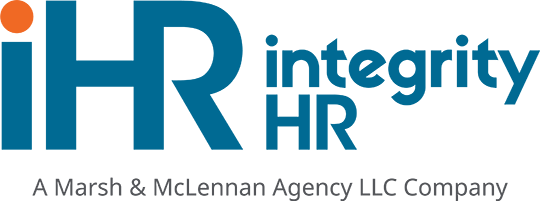As HR professionals, we are pros at handling “awkward employee conversations.” So today, we want to talk about something that may make you blush: breastfeeding mothers in the workplace.
Whew! We feel better just getting that off of our chest. (Get it?)
Last month (August) just so happened to be National Breastfeeding Month so we thought it was the perfect time to address this subject.
Did you know that out of all the mothers in the workplace, 57.3% have infants?
Here’s another number for you: 75% of new moms choose to breastfeed.
(Plugs some numbers into a calculate. Gets frustrated with math. Writes general statement.)
That means you could have quite a few nursing mothers on your staff looking for a clean, private location to nurse or pump.
So let’s get down to it. Today, we’re going to cover how to prevent lactation discrimination in your workplace along with suggestions for accommodating nursing mothers.
How To Prevent Lactation Discrimination
First off, we’d like to say that we did not come up with that term “Lactation Discrimination.” But kudos to whoever did!
Let’s talk laws. HR professionals love laws.
According to the Department of Labor, the Patient Protection and Affordable Care Act amended section 7 of the Fair Labor Standards Act to require employers to provide reasonable break time for an employee to express breast milk for her nursing child for one year after the child’s birth each time such employee has need to express the milk.
Employers are also required to provide a place, other than a bathroom, that is shielded from view and free from intrusion from coworkers and the public, which may be used by an employee to express breast milk.
The break time requirement became effective when the Affordable Care Act was signed into law on March 23, 2010.
Questions? Check out the DOL factsheet on this provision here
Who is covered by these provisions?
It is important to note that the provision only applies to companies who employ 50 workers or more, and only protects hourly workers, not salaried ones. Further, breastfeeding advocates (“lactivists” – again, kudos to whoever came up with that name!) say it’s unclear whether courts could actually force companies to abide the law. The provision includes no penalty for businesses that don’t comply.
That doesn’t mean your workplace won’t be investigated.
The Department of Labor’s Wage and Hour Division, which investigates complaints under the ACA, can mediate between an employer and an employee, explain to a company what its legal obligations are, or file an injunction to require an employer to comply. However, it has no authority to fine employers who violate the law.
Since the ACA took effect, the division has concluded 169 investigations related to the nursing mothers provision and found 71 violations, a spokeswoman said.
Ideas for Reasonable Accommodations
We are rule followers and although you won’t technically be fined for not complying with the law – we are always on the side of compliance. Also, let’s keep in mind the benefits of helping our working moms get back to work.
Now this may be easier for some companies than others. In an office setting, you can simply provide curtains (if there are windows) so that nursing mothers can have privacy in their office. (You may also want to pass out Do Not Disturb Signs to hang on doors to prevent a possible awkward encounter.)
Here are some other solutions for you to offer to your nursing employees:
- Food Service: Managers offices and storage rooms.
- Construction: Going to a private room indoors at the site, or mobile outdoor options (such as a mobile office or tent) if no location has been built yet.
- Health care settings: a small space can be designated for nursing moms, and floater staff and other employees can help provide patient care during the breaks.
- Manufacturing: Small storage rooms, offices or specifically designated areas can be created. Curtains are a simple solution in a room that will need to accommodate more than one woman at a time.
Now, if you are a larger employer or one with quite a few nursing mothers, you may want to think about installing a permanent lactation space in your office. It’s not as big of a hassle as it sounds.
If you have somewhere that is large enough to fit a chair and a flat surface for the pump then you’re good to go. Some companies that really can’t find that kind of space will partner with neighboring businesses that have the space available. In order to create a good partnership with the returning mom, have some dialogue with her to see what options she think will be suitable and reasonable. Most women are not going to suggest that a new suite be added on to the office for her lactation needs!
Bear in mind that if you really want to help your moms get back to work in the workplace, this is a good thing. Moms who can nurse/pump at work tend to have fewer absences and higher morale. Imagine how much better this will be if you give them a comfortable place. Also remember that this is not “extra break time” for the mother. Breastfeeding can be a challenge for a lot of new mothers; pumping milk is all the work with none of the joy of having a little bundle of joy in your lap and then getting a nap afterward. As awkward as you think this might be for you – you are just providing the space; your working mother is actually the one doing something very personal in what might be a non-personal environment, so be sure to be professional and sensitive about this.
Let’s talk ROI.
Yes, constructing a lactation space may cost your business some expense up front. (Hey, there’s no use in crying over spilled milk!)
However, family-friendly benefits like this also bring your business a 3:1 ROI through lower health care costs, lower employee absenteeism rates, lower turnover rates, and higher employee productivity and loyalty. (Statistics from Womenshealth.gov.)
Who doesn’t want lower turnover and higher productivity??
So here’s the gist – don’t just avoid this situation because it makes you blush. As employers, you need to meet the reasonable needs of your employees so that they have a supportive and safe place to work. With a little creativity and thought, your company can help your employees who are nursing balance their work life and home life a little bit easier.
See you made it through that whole article without breaking out in a sweat (we hope!). We’ll make sure to keep you abreast of any changes in the provisions. 🙂











